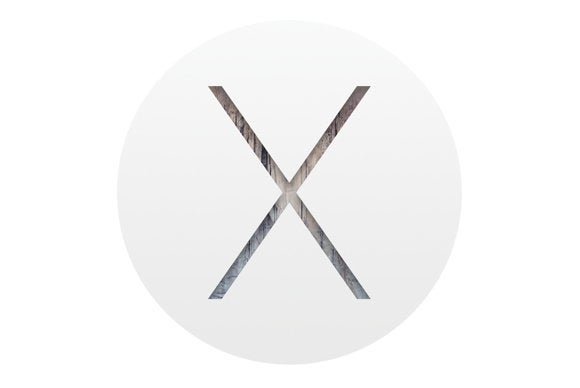How To Make Bootable Thumb Drive Yosemite From Dmg
- Apr 03, 2016 Right-mouse the USB drive, choose Restore with Disk Image From the warning dialog box, just click on Yes Browse for the DMG file, then Click on OK button The whole process then takes a.
- Nov 11, 2019 There are two ways to make a bootable copy of the installer; one makes use of Terminal, the command-line utility included with all copies of OS X and macOS; the other uses a combination of the Finder, Disk Utility, and Terminal to get the job done.
In the following instruction, we show specifically how to make a Mac OS X bootable installation USB from El Capitan.DMG, Yosemite.DMG, Maverick.DMG or any OS X older versions on Windows PC.
This is cool for Windows users who want to install Mac OS X on their PC, but useful for Mac users when their Mac is not working and needs to be re-installed new and fresh Mac Operating System.
Jul 10, 2018 In this tutorial we will show you step by step how to create ans make a bootable USB Flash Drive from a Mac OSX.DMG image file from Windows 10 (Sometimes called pen drive / thumb dive) so you.
Basically, you need two things: A MacOS X.DMG (or.ISO) and TransMac software.
- At for Bootable MacOS images, you can download any versions from our existing shares here: https://applehint.com/t/download-all-macos-x-10-4-10-14-original/376
- TransMac v11 full version:
Acute Systems TransMac v11.zip (download) 3.90 MB Please leave a comment if the download link does not work. Otherwise, you can download the trial version of TransMac here.
How to create Mac OS X bootable USB on Windows?
- You need to prepare an USB (8Gb or bigger).
- Run TransMac by Run as administrator
- Right-mouse the USB drive, choose Restore with Disk Image
- From the warning dialog box, just click on Yes
- Browse for the DMG file, then Click on OK button
- The whole process then takes a few minutes to finish
How To Make Bootable Thumb Drive Yosemite From Dmg Windows 10
Cheers!
These advanced steps are primarily for system administrators and others who are familiar with the command line. You don't need a bootable installer to upgrade macOS or reinstall macOS, but it can be useful when you want to install on multiple computers without downloading the installer each time.
Download macOS
Find the appropriate download link in the upgrade instructions for each macOS version:


- macOS Catalina, macOS Mojave, and macOS High Sierra download directly to your Applications folder as an app named Install macOS Catalina, Install macOS Mojave, or Install macOS High Sierra. If the installer opens after downloading, quit it without continuing installation.
To get the required installer, download from a Mac that is using macOS Sierra 10.12.5 or later, or El Capitan 10.11.6. Enterprise administrators, please download from Apple, not a locally hosted software-update server. - macOS Sierra downloads as a disk image that contains a file named InstallOS.pkg. Open this file and follow the onscreen instructions. It installs an app named Install macOS Sierra into your Applications folder.
- OS X El Capitan downloads as a disk image that contains a file named InstallMacOSX.pkg. Open this file and follow the onscreen instructions. It installs an app named Install OS X El Capitan into your Applications folder.
Use the 'createinstallmedia' command in Terminal

- Connect the USB flash drive or other volume that you're using for the bootable installer. Make sure that it has at least 12GB of available storage and is formatted as Mac OS Extended.
- Open Terminal, which is in the Utilities folder of your Applications folder.
- Type or paste one of the following commands in Terminal. These assume that the installer is still in your Applications folder, and MyVolume is the name of the USB flash drive or other volume you're using. If it has a different name, replace
MyVolumein these commands with the name of your volume.
Catalina:*
Mojave:*
High Sierra:*
Sierra:
El Capitan: - Press Return after typing the command.
- When prompted, type your administrator password and press Return again. Terminal doesn't show any characters as you type your password.
- When prompted, type
Yto confirm that you want to erase the volume, then press Return. Terminal shows the progress as the bootable installer is created. - When Terminal says that it's done, the volume will have the same name as the installer you downloaded, such as Install macOS Catalina. You can now quit Terminal and eject the volume.
* If your Mac is using macOS Sierra or earlier, include the --applicationpath argument, similar to the way this argument is used in the commands for Sierra and El Capitan.
Use the bootable installer
After creating the bootable installer, follow these steps to use it:
- Plug the bootable installer into a compatible Mac.
- Use Startup Manager or Startup Disk preferences to select the bootable installer as the startup disk, then start up from it. Your Mac will start up to macOS Recovery.
Learn about selecting a startup disk, including what to do if your Mac doesn't start up from it. - Choose your language, if prompted.
- A bootable installer doesn't download macOS from the Internet, but it does require the Internet to get information specific to your Mac model, such as firmware updates. If you need to connect to a Wi-Fi network, use the Wi-Fi menu in the menu bar.
- Select Install macOS (or Install OS X) from the Utilities window, then click Continue and follow the onscreen instructions.
Learn more
For more information about the createinstallmedia command and the arguments that you can use with it, make sure that the macOS installer is in your Applications folder, then enter this path in Terminal:
Catalina:
Mojave:
High Sierra:
Bootable Xp Thumb Drive
Sierra:
How To Make Bootable Thumb Drive Yosemite From Dmg Mac
El Capitan: